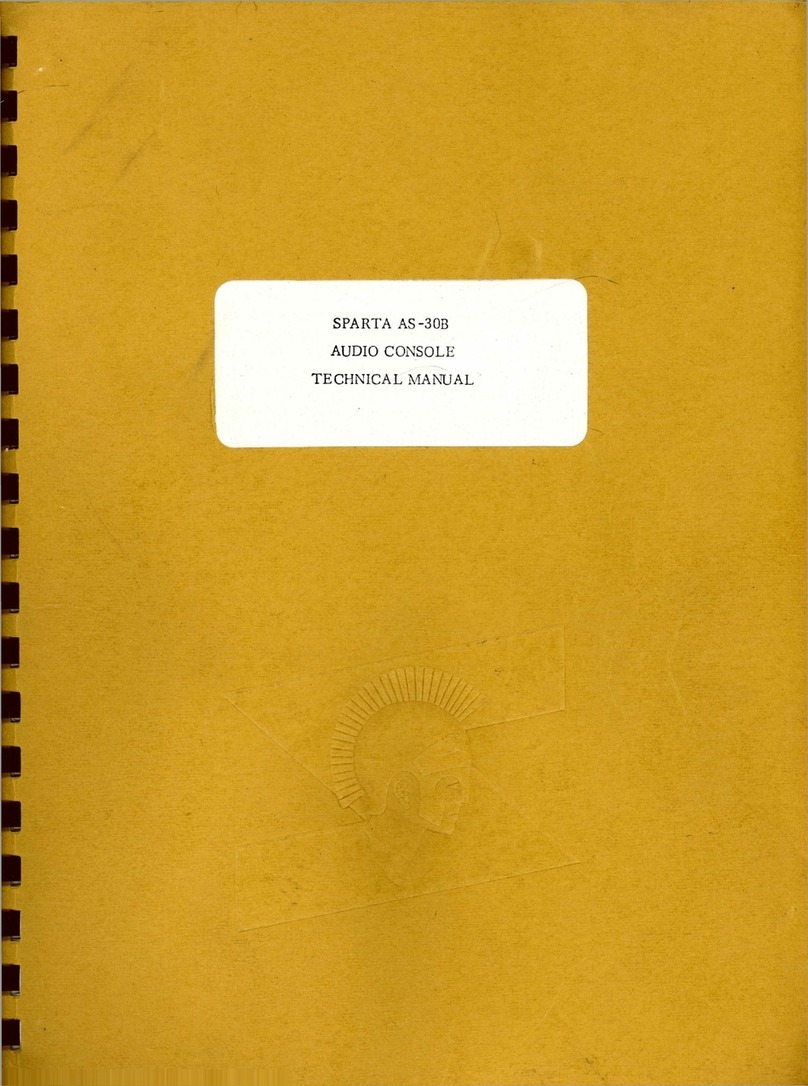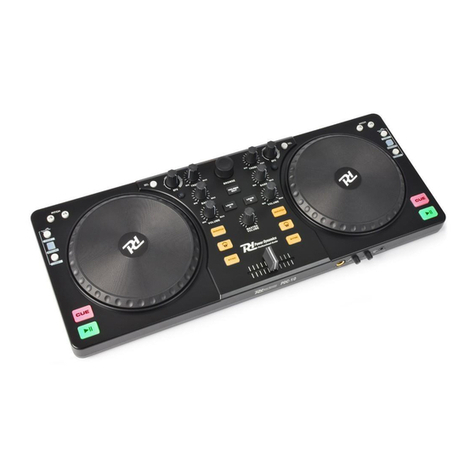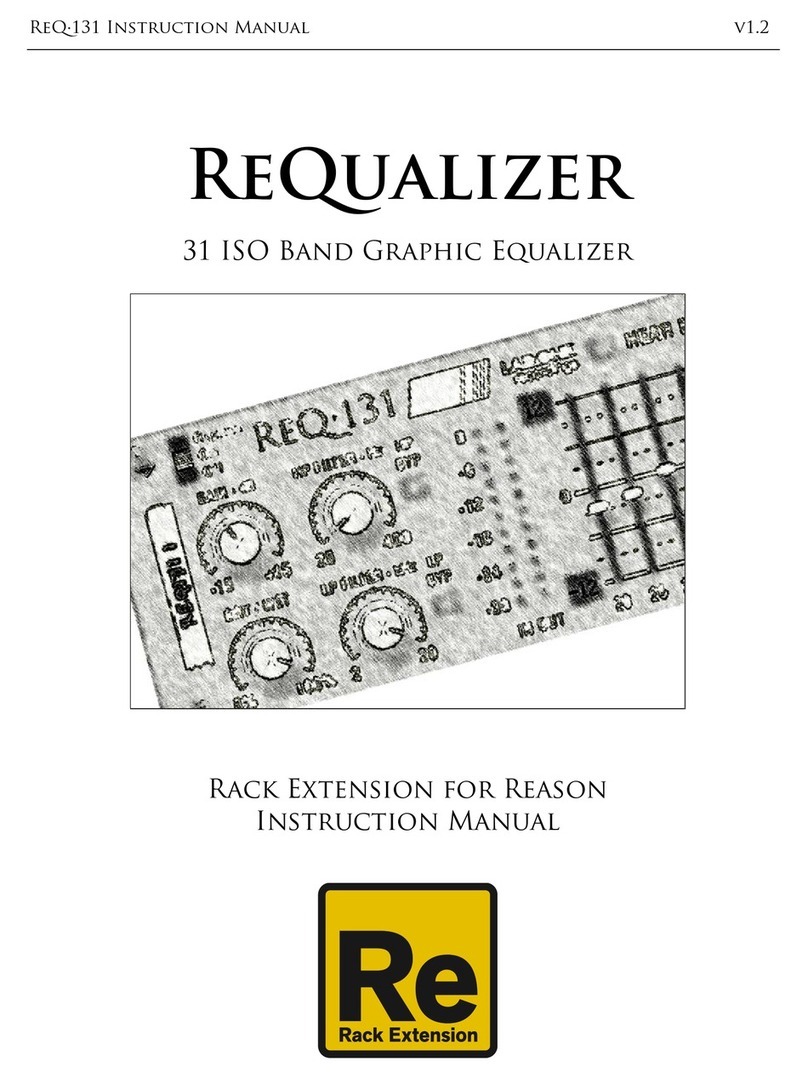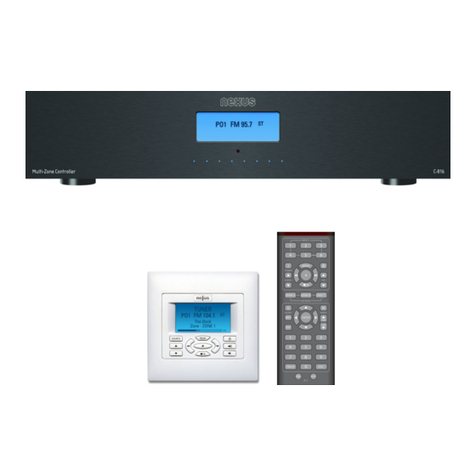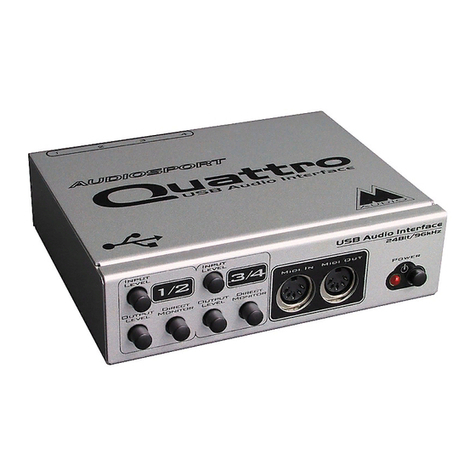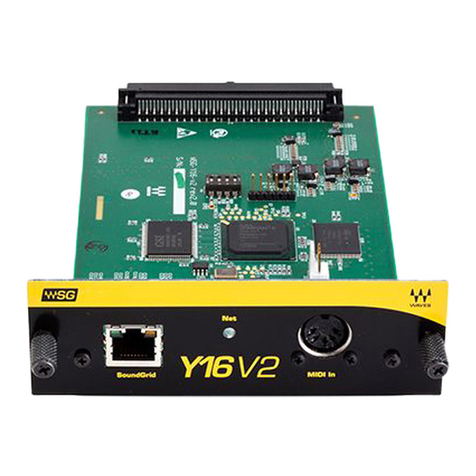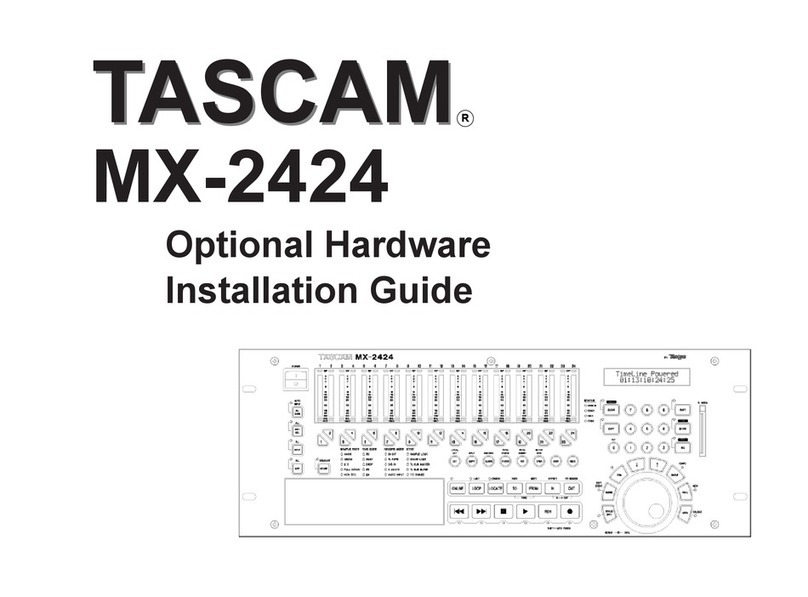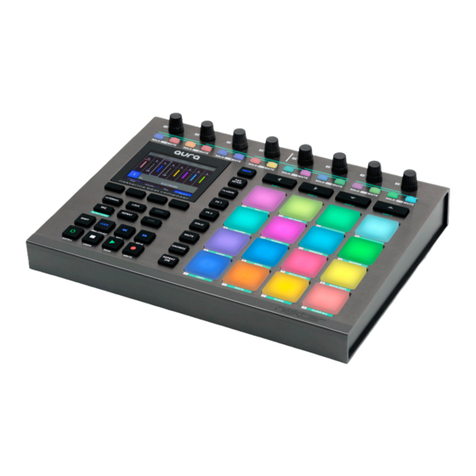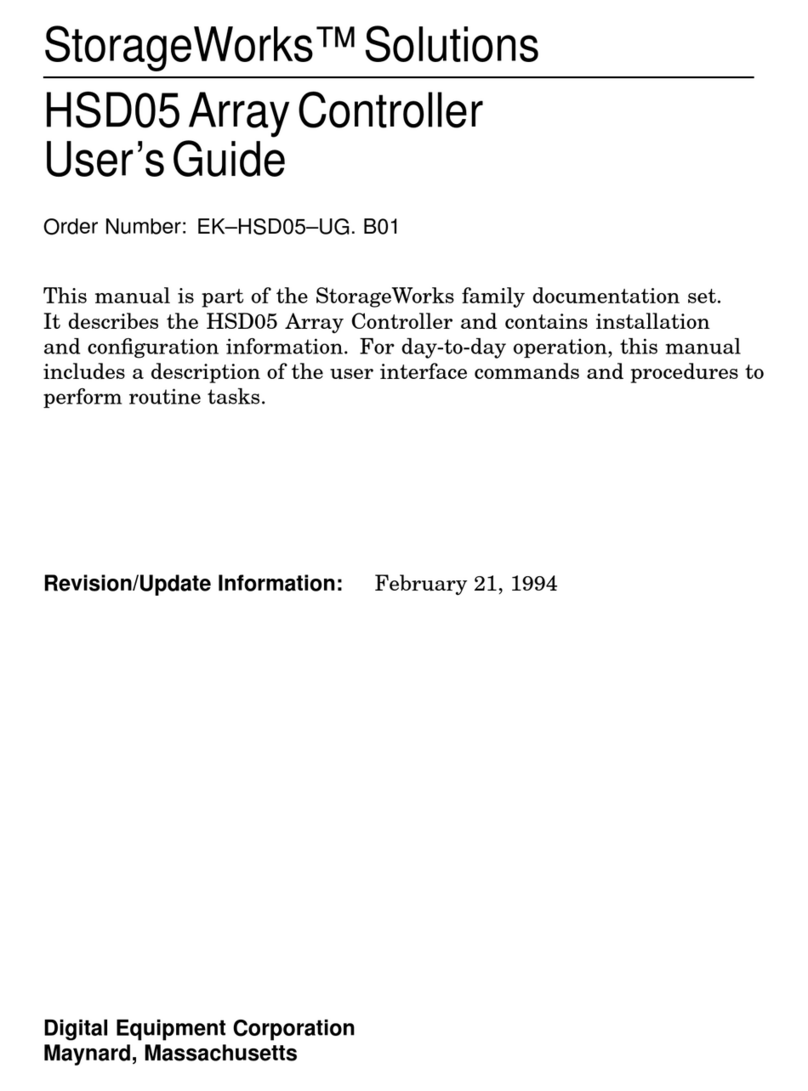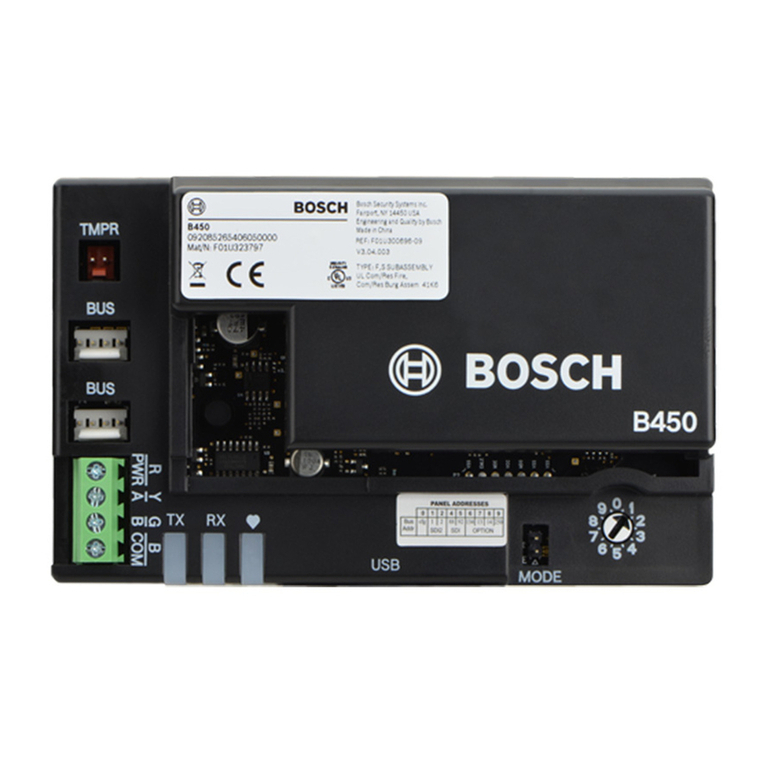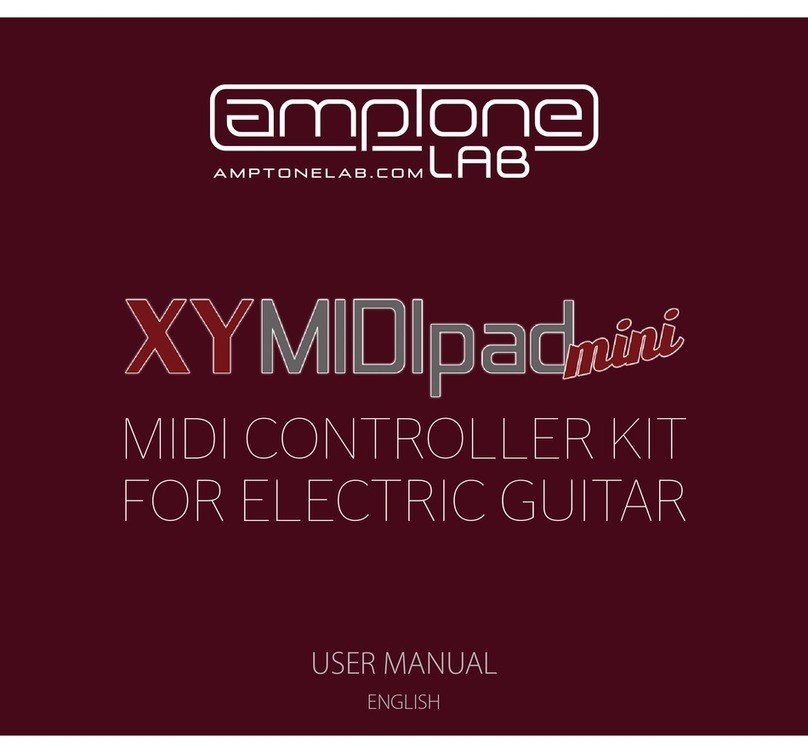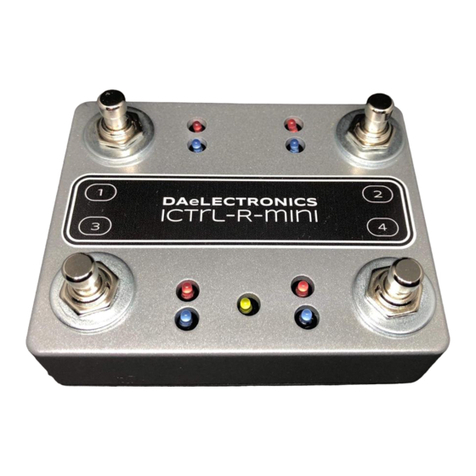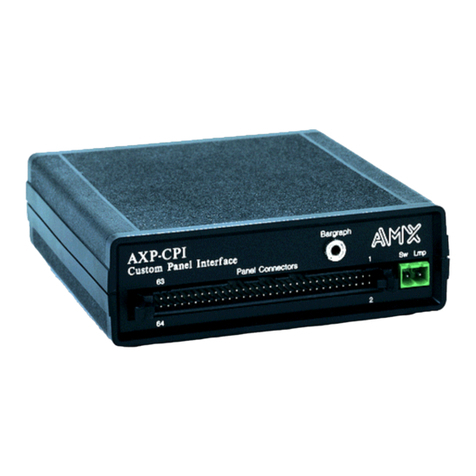Sparta AS -30B User manual

www.SteamPoweredRadio.Com
MIXERS:
INPUTS:
OUTPUTS
:
F i
ve
AS -
308
CONSOLE
SPEC
I
FICATIONS
Nine
stereo
pairs;
On
e
each
for
MLxers
l
through
4
and
five
for
Mixer
5,
plus
exte
rnal
AIR
input
.
Low-l
eve
l;
-
55
db
nominal
from
150/250
ohms
(50
ohm
selected
by
j
umper),
standard
on
Mixer
l
(optional
for
Mixer
2).
Hi
-l
evel;
-10
dbm
nomina
l
from
600
ohm
source,
stand
a
rd
on
Mixers
2
thr
ough
5. S
ee
note
1.
AI
R;
D
epends
upo
n
ex
t
erna
l
monitor-amp
.
Program;
8
dbm
into
bal
an
ced
600
ohms
at
0
vu
.
22
dbm
max
.
Au
dition;
8
dbm
nominal
into
600
ohms
single-ended
.
(from
60
ohm
so
u
rce
.
See
note
2).
Monitor;
lv
nomin
al
into
hi
-Z l
oad.
Cue;
O.
lv
nomin
al
into
hi-Z
lo
a
d.
Phone
s ; 1
mw
nomin
al
into
-lOK
ohms.
FREQ.
R
ESPONSE:
A
ll
outputs
less
t
han
2db
down
,
20
Hz
to
20
kHz
.
NOISE:
D
ISTORTION:
C
Ra3STALK:
POWER:
SIZE:
SHIPPING
WT:
MUT
I
NG
:
NOTE
:
1:
NOTE
2:
Bel
ow
65
db
at 0
vu
out
with
-
55
db low
level
input
Bel
ow
75
db
a t 0
vu
out
with
-10
dbm
hi
-level
input
A
ll
outputs
less
than
0.
5%
THO
at
norma
l
operating
levels
.
L
ess
than
1%
THO
a t
max
outputs
.
Below
nois
e
in
a
ll
channe
ls
and
modes
117
/234
vac
,
50/60
Hz.
W , 15
1/2";
H,
6
5/8"
; D,
10".
24
lb
s
(incl.
pwr
.
supply
)
Switch
clo
s
ur
e
to
rear-panel
t
erm
inals
from
!\ILxers l
to
3,
clos
ed
in
Aud
. &
Prog.
modes
for
control
of
external
DC
relay
s .
H
i-le
ve
l
inp
uts
_ar e
balanced-bridging
to
allow
individual
termination
of
input
lines
;.it
rear
panel,
if
required
.
Permits
constunt
lin
e
lo
:id
pl
us
u
se
of
higµ-imp
c
dance
sources
.
I
dentic
al
line
amplifiers
for
·
Prog
r
am
and
Audition
outputs
.

www.SteamPoweredRadio.Com
SPARTA ELECTRONIC CORPORATJON
D
ear
Customer,
C
are
fu
l
attent
ion
to
QuaJity
Control
is
an
other
important
element
in
our
daily
effor
t to provide you
with
excellence
of
product
and
service.
At
SP
AR
TA
each
pi
e
ce
of
equjpm
ent
and
sub-as
se
mbly
receiv
es
numerous
in
spect
ions and
te
s
ts
in
th
e p
rocess
of p
rod
uction.
Th
e final
result
s
must
m
easu
re
within
our
exact
ing
requirements
before
it
is shipped
to
you.
Listed
below
are
just
a
few
of the
major
check points and
tests
this
particular
pie
ce
of e
qwpment
has
r e~eivcd be
for
e
be
ing
prepared
f
or
shipmen
t. Should you note any
discr
epa
ncy
in
the
appearance
or
operation of
your
SPARTA
Pr
oducts
or
if
you h
av
e
any
gene
ra
l
comments
as
to
how
we
might be of
greate
r
service
,
your
suggestions
will be
gr
ea
tly
appreci
ated.
AS-308
Custom
er
:
U.-.,,._
.:,v-
..
liv
•-~~
, u
-,'<-L''<-·
l:rp
SERIAL
NO._--'-J_______.._f_.'
/
___
DATE:
<r;
//4
/.,,--,
)
(1-r,1-
PWR
. SUP. SERIAL
NO:
VJ
j
(7
CAL.
BY
✓
.2-
U<.....Q
No. OF
PREAMPS
'
--~---
----=
=-
----
OUTPUT DISTORTI
ON
SIGNAL/NOISE
PHASE
CH
..:
lL:
<~
, / ':i
-%
r,',
q ·
+ dbm -db
.r.t.
I,
CH-
lR
: +
,_
/ ,
dbm
I 7z; %
C;
y
db
CH-lL
Freq.
Resp.
-2db
at
Hz
-2db
at
KHz
l
KHz
Ref
.
--------
CH-lR
Freq.
Resp.
-2db
at
Hz -2db
at
KHz
--------
MONO
-S
TEREO MIC.R & L MONO-STEREO OUT CROSSTALK
CH-2L
+
/'-
..
0
dbm
I
/4
%
-r
/".
db
CH-2R +
,-,~
dbrn ' 1~ %
2'
'?('
db
Fr
e
q.
Resp.
CH-2L I 1
11
-::;:- 2
~
l(
CH2-R
11'
- )
/'l{
L
evel
CH-3 L +
~
d
bm
~
L& % /
9'
db
CH-3 R +
dbm
I I
-1-
%
/Y
db
Freq.
Resp
.
CH-3L
z.u
-2
(f
f{
CH3-R (
7-
:;
Cit
(
CH-4
L + <..
""~
V
dbm
,,
I
2-
% )
'-1
db
CH-4 R + <~,;- d
bm
.,
LI_
% ,
--
-v
db
Freq.
Resp.
CH-4L
I.Cf
?,
r A
CH4
-R I -
,-;
--:.,.~
I
CH-SLATh
.E
+
..,.
~-----
£:'.'
dbm
" )7 % , D db
CH
-5
R
l',..
Th
. E +
c..~
dbm
7'7
%
~
~.
db,
.,
,,
Fr
eq,
Resp
. CH-SL
?-(.I
- 2
':J''l[
CHS-R
/_
..
~
-2
..
{r
I
-•'
t
(..,
Audition L +
,.
,~
dbm
I
I'}_
% ~
ZtJ
db
Output R + C
dbm
~
I u %
db
Monitor Air R & L L
Pr
og R & L t. Aud R & L
-----
-----
--
-----
P
HONE
CUE
MUTING
---------
----~-
--
--
----------
TEP-3S
ASC-30
5B
Wow
&
Flutt
er
RTT
Calib
by
Ca
rt.
------
-
---
LTT
3/29/71

www.SteamPoweredRadio.Com
GENERAL:
AS-30B CONSOLE
DESCRIPTION
The
AS-30B
is
a
desk-type
Stereo
Audio
Conso
le
featuring
five
mixing
channels
with
push-but
ton-selected
multiple
inputs
for
Mixer
5.
As
normally
supplied,
the
first
mix
er
inclu
des
low-l
evel
preamplificrs
for
50
to
150
ohm
microphones
and
the
rem
aining
four
arc
supplied
with
high
-
level
balanced
inp
ut
transformers
.
The
inp
ut
transform
ers
for
ML"'<.er
l
are
located
on
cards
tb
allow
replacement
with
another
pair
of
low-l
evel
preamplifiers.
The
hi
gh
-l
evel
i
nputs
are
balanced
bridging,
wh
ich
avoids
the
source
l
oading
of
th
e
typical
600
ohm
i
nput
and
greatly
increases
the
flexibi~~ty
of
the
console.
In
the
very-
rare
in
stance
where
a
600
ohm
termination
is
required,
it
is a
simple
matter
to
add
a
pair
of
620
ohm
resistors
across
the
line
at
either
the
source
or
lo
ad
end
.
Some
sources,
such
as
Ampex
and
TEAt,
provide
for
this
int
ernally.
When
operating
from
sources
intended
for
single
-
ended,
high-impedance
lo
ads
,t
he
minus
input
terminals
of
th
e
consoles
are
connected
to
the
shield
and
the
conso
le now
appears
as
a
single-ended
h
igh
-i
mpedance
(l0K)
load
.
T
he
Audition
and
Program
Amplifiers
in
the
AS-30B
are
id
entica
l
and
interchangeable
.
In
the
Audition
side
,
the
li
ne-amplifier
gain
is
de~ermined
by
internal
resistors
and
is
set
to
provide
approximately
the
same
l
eve
l
output
as
the
Program
side
with
normal
· g
ain
control
settings
.
The
audition
output
terminals
are
fed
directly
from
the
audition
lin
e
amplifiers
from
a
single-ended
source
impedance
of
60
ohms.
The
audition
out
-
put
is
then
capable
of
driving
multiple
l
oads
with
little,
if
any
attenuation.
The
input-so
urce
selection
for
Mixer
1 is
via
a
push-button
assembly
which
allows
more
than
one
source
to
be
selected
simultaneously
.
This
feature
,
if
used
judiciously,
will
permit
more
d1an
one
source
to
be
mixed
simultaneous
ly
on
the
one
mixer
pot.
If
this
is
attempted,
the
individu
al
source
levels
must
be
adjus
t
ed
externally
but
.
th
e
console
will
not
lo.id
either
source
·.
It
must
be
considered
,
however,
that
each
-1-

www.SteamPoweredRadio.Com
AS
-3013
D
escription
(con
t'd)
of
t:wo
sources
will
then
be
loaded
by
the
other
,
and
suitable
isol
atio
n mu
st
be
pr
ovi
ded,
if
requi
red
.
INSTALLATION:
Input
and
Output
Connections,
wit:h the
exception
of
the
Mixer
1
XLR
co
nnectors
,
are
made
vi
a
rear-panel
b::irri
er
strips
.
Spade
lu
gs
or
fanning-strips
are
n
ot
required
s
in
ce
the
barrier
st
rips
arc
d
es
igned
with
captiv
e
plates
to
easily
accommodate
severa
l
str
ip
ped
wires
per
termin
al,
either
solid
or
stranded
.
Rear
p
ane
l
connections
aJ:c
clearly
id
en
tified to
facil
i
tate
installation
without
resorting
to th
e
manual
or
to
a
numbered
diagram
.
Audio
connecti
ons
are
norm
a
lly
made
with
twisted-pair
,
shie
lded
cab
le
such
as
Be
l
den
8737 (
strand
ed)
or
8739 (
solid
),
Either
may
be
us
e
d,
although
it
is
generally
more
sa
ti
sfactory
to
use
solid
wire
in
a
permanent
i
ns
t
allation
·where
flexibility
is
not
r
equired
since
solid
wi
re
is
eas
i
er
to han
dle
and l
es
s
apt
to
i
nadvertently
short
to
an
adjacent
terminal.
S
ingle-ended
outputs
and
in
puts
can
use
the
same
type
cable
by
simp
ly
clippin
g off
d1e
unused
conductor
.
Th
e
input
t
ermina
ls _
include
a
ground
con
nec
tio
n
for
the
cable
shield
and
the
transformer
input
windings
are
ungrou
nde
d
or
"floating"
.
This
prev
ents
the
possibility
of
setting
up
a
severe
ground-
Ioo.p and al
so
J:)2rm
it
s
one
side
of
the
transformer
i
nput
to be
grounded
for
single
-ended
operat
ion
if
desired.
In
like
manner
,
th
e
program
line
out
:lt1ts
are
al
so
isolated
.
A
central
ground
lug is
provided
on
the
r
ear
pan
el
for
connection
to
the
system
m
as
ter
ground,
and
as
heavy
a
guage
strap
or
braid
as
pract
ic
al
sh
ould
be
u
se
d.

www.SteamPoweredRadio.Com
CIRCUIT
DI:SCRIPTlON ,
SPARTA
AUDIO
CONSOLES
GENERAL .
The
description
to
fo
ll
ow
is
generally
applicable
to
all
SPART
A
consoles
, m
ono
or
stereo,
and
out
lin
es
the
b
as
ic
syst
em
of
selecting
,
mixing
and
amplifying
the
usu
a1
program-
sources
p
lus
th
e
me
th
ods
used
to
process
auxilliary
functions
such
as
cue
and
monit
or
signals.
Features
applicable
to
specific
consol
es
are
t
hen
discussed
elsewher
e
in
th
e
appropria
te
manu
al
section
s .
Microphon
e
Preamplifiers
.
With
a
nomina
l
gain
of
SSdb
.
the
output
l
eve
l from
the
preamp
to
the
mixer
potentiometer
is
ty
pically
-1
0
to
Jf
dbm
.
depending
,
of
course,
on
th
e
sound
l
eve
l
and
microphon
e
u
sed.
In a
norma
l s
ituation,
then
,
th
e
preamplifier
output
is
at
essentia
ll
y
the
same
l
eve
l
as
th
e
high-
l
evel
input
signals
,
resultin
g
in
approximate
ly
th
e
same
mixe
r-l
eve
l
settings
for
normal
operation
.
Pr
eamp
gain
can
be
changed
to
accommodat~
unusua
l
situations
by
ref
erring
to
the
preamplifier
circuit
description.
As
n
orma
lly
supplied
by
SPARTA
, t
he
·i
nput
tran
s
former
is
wired
for
u
se
with
150/
250
ohm
microphones
. A
transformer
tap
is _
provided
for
easy
conv
e
rsion
to
use
with
30/50
ohm
mi
cropho
n
es
.
All
SPARTA
Aud
io
Consoles
are
supplied
as
standard
with
a
microphone
preamplifier
in
th
e
firs
t
mixer
position
.
Th
e
preamplifiers
are
int
e
rch
ange
-
abl
e
with
high-
l
eve
l
input
cards
,
how
e
ver,
so
additional
microphone
l.

www.SteamPoweredRadio.Com
CIRCUIT DESCRIPTION, GENERAL
pre
amp
lifi
ers
may
be
inc
orporated
,
or
alternately
,
all
inputs
may
be
high
-
l
evel
.
High
-
Level
Inputs
are
brought
to
the
primar~es
of
input-i
so
l
ation
transform
ers
which
are
suitably
terminated
and
connected
directly
to
t
he
proper
l
111ix
er
potentiometers
.
The
primaries
are
floating
(unground
ed)
to a
ll
ov1
1 s
in
gle-ended
connection
and
also
to
prev
e
nt
the
possibility
of
setting
up
undesired
ground-loops
or
common
-
mode
si
gnals
via
th
e
inp
ut
cables.
Mixing
ta
kes
place
by
feeding
the
output
of
each
mixer
pot
e
ntiometer
t
hrough
a
high-valu
e
series
resistor
(l0K
or
27K)
to
a
common
mixing
bus,
which
in
turn
l
eads
to
a
mixing
amp
lifi
er
.
Th
e
mixing
amplifier,
which
is
usually
lo
ca
ted
with
the
line
amplifier,
is
specifically
designed
to
have
a v
ery
l
ow
input
imp
eda
nce
,
typica
ll
y
100
ohms
.
Since
the
Mixer
feed
resistors
are
so
much
higher
in
value
,
the
mixer
amp
becom
es
a
"curr
en
t
sink"
and
responds
to
the
current
in
the
feed
resistors
,
which
in
turn
is
de
termined
by
the
voltage
available
from
th
e
Mix
er
pots
.
The
output
of
th
e
mixer
amp
,
then,
is
propoi;-tional
to
th
e
sum
of
th
e
currents
at
it
s
input.
2.

www.SteamPoweredRadio.Com
CIRCUIT
DESCRIPTION
, GENERAL
Mixer
isolation
is
excellent
with
th
is
system
since
the
current
from
each
fe
ed
resistor
will
fol.low
the
easiest
path
- -
obvious
ly
into
the
mix
er
amp
rath
er
than
to
another
Mixer
pot.
Changing
one
mixer-pot
,
t
hen
,
will
have
relative
ly
littl
e
effect
upon
the
program
level
coming
from
another
mixer
-
pot.
There
is
obviously
a
significant
loss
of
program
power
in
the
mixer
feed
re.
sisters
,
but
th
e
power
l
eve
ls
are
so
low
that
it
is
a
simple
matter
to
recover
the
l
oss
in
th
e
mixer
amplifier.
Mixer
amp.
ga±n
is
set
to
restore
the
program
to
substanUally
the
same
level
as
originally
fed
to
the
mixer
pots
,
with
the
mixer-pots
at
their
usual
operating
positions
,
about
one
o'clock.
Since
a
"current"
mixer
operates
from
a
rel
a
tiv
e
ly
high
source
imp
eda
nce,
it
allows
the
use
of
high
i
mpedance
mixer-pots
. And
since
it
is
not
critical
of
t
he
precise
source
impedanc
e ,
thete
is
no
need
to
resort
to
the
bulk
and
cost
of
precision
ladder
attenuators
.
Output
of
the
mixer
system
is
t
hen
fed
to
the
Master
gain
control
at
essenti
a
lly
the
same
l
eve
l
as
the
origina
l
high
-l
eve
l
program
material.
To
t
est
the
entire
mixer
system
, a -
10
or~·
dbm
signul
is
provid
ed
at
a
high-l
evel
input
,
th
e
appropriate
mixer
pot
is
set
at
th
e
normal
operating
position
and
the
signa
l
is
viewed
or
measured
across
t
he
Master
guin
contro
l.
3,

www.SteamPoweredRadio.Com
CIRC
UIT
DI:SCRIPrION
, GENERAL
The
Linc
Amplifier
provides
th
e
final
amplification
between
th
e
Master
gain
control
and
the
li
ne
output
terminals
.
It
must
therefore
recover
t
he
signa
l
l
oss
of
th
e
Master
gain
control
,
compensate
for
any
losses
in
matching
or
isolation
pads
,
and
provide
power
-gain
for
driving
the
output
li
ne
at
rat
ed
l
eve
l.
F
or
a
rated
output
of
8dbm
into
a
600
ohm
li
ne
at
zero
VU
,
several
factors
must
be
considered
: A
minimum
of
10
dbm
of
add
ition
al
gain
,
without
distortion,
mu
st
be
available
to
handle
program
peaks
(
headroom
).
Also
,
th
e
output
transformer
must
be
isolated
from
the
line
with
a
pad
,
typic
a
lly
4 ·
db
,
to
prevent
int
eract
i
on
with
line
reactances
. Fin
ally,
the
li
ne
amplifie
r
output
-
imp
e
dance
must
properly
match
th
e
lin
e t
ransformer
primary
so
the
output
te
rmin
als
a re a
tru
e
600
ohm
source.
The
lin
e
transformer
must
th
en
handle
a
nominal
l
evel
of
l
2dbm,
and
22
dbm
on
program
peaks
.
The
lin
e
amplifier
must
be
capable
of
supplying
18dbm
to
th
e
line
plus
the
power
-l
osses
in
the
li
ne
pad
,
insertion
loss
in
the
t
ransform
er
and
internal
l
oss
necessary
to
obtai
n a
proper
imp
edance
match
.
This
is
considered
in
detail
in
the
line-amplifier
section
of
the
manua
l.
VU
Meter
.
The
standard
VU
m
eter
contains
rectifier
diodes
and
consequently
appears
as
a
non
-
lin
ear
imp
edance
to
its
signal
source
.
To
avoid
introducin
g
4.

www.SteamPoweredRadio.Com
CIRCUIT DESCRIPTION , GENEHAL
dist
ortion
on
th
e p
rog
r
am
-lin
e ,
it
is
necessary
to
provide
isolation
be
tw
ee
n
th
e
meter
and
th
e
line.
It
is
a l
so
n
ecessar
y
to
a ttenw::ite
the
l
evel
to
the
mete
r
so
it
can
indic
ate
~
vu
when
the
line
is
a t
8dbm
and
finally,
the
attenuator
must
be
so
desig
ned
as
to
appear
to
the
meter
as
a 3 .
9K
ohm
source
to
p
reserve
th
e
.
lin
earity
of
th
e
me
ter
in
dication
.
This
l
atter
requirem
e
nt
accounts
for
the
meter
p
ad
being
a
"T"
configuration
r
ather
th
an
a
simple
se
ri
es
r
esistor
.
In
SPARTA
consoles,
th
e
metering
source
is
th
e
lin
e
transformer
output,
ah
ea
d
of
thG
line
pad
,
which
al.lows
an
added
4
db
of
attenuation
in
the
met
er
pad
for
increased
i
sola
t
ion.
A
balanced
"H"
pad
is
not
required
since
t
he
met
er
n
eed
not
be
ba
l
anced
to
ground.
Cu
e .
Common
to
a
ll
SPARTA
consoles
is
a "
Cue"
position
on
each
Mixer
pot
entiome
t
er.
In t
he
simpl
es
t
case,
program
materi
ol
from
each
mixer
,
thr
ough
th
e
cue
switches
and
isolat
i
on
resistor's
, i s
delivered
t o a
rear
- pa
nel
te
rm
ainal
for
feed
to a n e
xt
erna
l
cue
amplifjer
.
In
more
elaborate
consoles
, a
cue
l
eve
l
control,
i
nterna
l
ampli.fier
and
optional-u
se
internal
speaker
are
.
p
rovid
ed .
Monitor.
Although
provis
ion
s
for
program-line
monitoring
vary
in
different
SP
ARTA
conso
l
es
,
in
a
ll
cases
th
e
source
of
program
mc1
t
erial
is
th
e
output
5.

www.SteamPoweredRadio.Com
CIRCUIT
DESCRI
PTION/MAINTENJ\NCE
.PREAMPLIFI
ER
, 1
018
The
1018
Preamp
li
fie
r i
.s
supplied
standard
for
opera
ti
on
with
1
50/250
ohm
mic-
rophon
es
and
pro
vi
des
a nom
in
al
gain
of
SSdb
into
a
600
ohm
or
hi
gher
load.
/1.
ju
mper
is
pro
vided
on
the
circuit
bo
ard
,
eith
er
a
wire
or
a
low-valu
e
resis
t
or
,
to
accommod
a te
30/50
ohm
mi
crophones
.
The
101
8
Preamplifier
differs
from
its
predecessor
,
the
1008A,
in
several
resp
ects
.
Th
e
microphone
transformer
is
a
min
i
atu
riz
ed
PC-mounting
type
with
extended
hi
gh
and
tow
frequency
re
spo
nse
.
The
1018
circuitry
t
akes
full
•
advanta9e
of
th
e
tran
s-
former
' s
BOK
secondary
imp
edance
to
provide
improv
ed
noise
performance
,
expand-
ed
frequency
response
and
excellent
overload
churacteristics
.
With
normal
mic
r
ophone
in
put l
evels
,
the
output
level
to th
e
mixer
will
be
approx-
0 dbm.
The
maximum
output
l
evel
of
the
1
018
before
clipping
is
in
excess
of
14
dbm,
wh
ich
assures
more
than
adequate
h
ead-room
in
normal
operation.
In
th
e
event
th
at
microphon
es
must
be
u
sed,
which
prov
i
de
unu
sua
lly
high
output
, a
pad
may
be
added
in
ser
i
es
with
th
e mi
crophone
or
a
resistor
in
the
101
8
may
be
ch
anged
in
value
to
l
owe
r
th
e
preamp
ga
in,
as
described
l
ate
r.
T
he
i
nput
signa
l is
amplified
approximately
20
db
by
t
he
inpu
t
tr
ansfonner
and
then
amplified
a
fur
t
her
3Sdb
by
transistors
Ql
and
Q2
.
Th
e
ou
t
pu
t
signal
from
Q2
th
e n
passes
t
hrough
emHte
r
-follower
Q3
to'provid
e
the
-
necessary
l
ow
output
Imp
edance
.
Th
e
em
itt
er
of
Q2
is
heavily
bypa
ssed
to
ground
by
capacitor
CB; t
herefore
th
e
base
imp
cdnnce
of
Q2
is
q
ui
te
lo
w ,
being
essentia
lly
a
forward
-
biased
diode;
l.

www.SteamPoweredRadio.Com
Most
o[
the
signc1l
current
from
Ql
posses
to
the
base
of
Q2,
then
,
ra
t
her
than
throu
gh
the
much
hi<]her
impedance
of
the
collector
resistor
R3
.
This
assures
maximum
current
gain
from
Ql,
a
lthou
gh
the
voltage
gain
is
relatively
small.
The
emitter
of
Q3 is
not
bypassed,
however
,
so
the
:
base
impedance
of
Q3
is
re
lati
vely
high
compared
to
Q2
's
collector
resistor
R4.
The
signal
current
from
Q2
must
therefore
cause
a
significant
signal
voltage
across
R4.
This
assur
es a
maximu
m
of
voltug
e
gain
from
Q2
,
and
since
Q3 is
an
emitter-follower
this
signal
appears
at
the
low
impedance
emitter
of
Q3 .
A
portion
of
the
output
signal
determined
by
fe
edback
attenuator
R8/R9
app
ea
rs
at
the
emitter
of
Q1.
Sinc
e Q1
and
Q2
both
invert
the
signals
through
them,
the
feed-b
a
ck
to
the
emitter
of
Ql
is
in-ph
a se
with
th
e
signal
input
to
the
base
of
Ql
.
This
consitutcs
ne
gative
feed-back
,
sinc
e
the
feed-back
attempts
to
cancel
the
input
signal.
Th
e
open-
l
oop
gain
(
with
o
ut
feed-back)
is
extr
emely
high,
so
the
normal
closed-l
o
op
gain
is de
termined
by
the
turns-
ratio
of
th
e
input
transformer
plus
th
e
ratio
of
RS
to
R9.
It
can
now
be
seen
that
changing
th
e
value
of
either
RS
or
R9
will
change
the
gain
of
the
amplifier
proportionally.
For
exampl
e ,
if
R9
were
to
be
incre
a sed
to
360
ohms,
the
voltage
gain
of
the
amplifier
would
de
crease
by
Gdb,
since
th
e
output
of
th
e
amplifi
er
would
only
need
to
swing
half
as
far
to
provid
e
the
sam
e
feed-back
voltage
to
t
he
emitter
of
Ql
.
Cc
,
ms
e
quently
,
reason-
ab
le
sel.cct~on
of
ga
i.n
cun
be
obtained
simply
by
se
lecting
the
w1
lue
of
R9
.
The
use
of
negative
feedback
to
control
gain
via
the
input
emitter
also
has
the
effect
of
raising
th
e
input
imp
e
dance
to
Ql
.
Thjs
pe
rmits
the
use
of
a
high-ratio
2.
.,

www.SteamPoweredRadio.Com
input
transformer
for
added
voltage-guin
without
added
noise.
Distortion
is
also
lowered
with
negative
feed-back
since
any
difference
between
the
input
and
output
wave-forms
appears
as
an
error
signal.
Distortion
in
the
1018
is
held
well
below
0.1%.
A
stable
operating-point,
or
"Q",
js
one
of
the
most
important
characteristics
of
an
amplifier
because
the
maximum
signal
output
without
clipping
and
therefore
the
headroom
is
dctcrmim~d
by
the
average
DC
voltage
at
the
emitter
of
Q3.
The
emitter
can
move
no
higher
than
the
supply
voltage
and
no
lower
than
ground,
so
the
idea
1
operuting-point,
permitting
maximum
dynamic
range,
is
logically
some-
where
near
to
one-half
the
supply
voltage.
The
emitter
voltage
of
Q3
is
set
by
the
collect
cir
voltage
of
Q2
and
since
the
collector
current
of
Q2
is
also
the
emitter
current
of
Q2,
any
change
in
the
coJlect-
or
voltage
of
Q2
also
~ppears
as
an
inverted
change
at
the
emitter
of
Q2
..
The
bias
current
for
Ql
is
obtained
through
RG
from
the
emitter
of
Q2;
therefore,
any
change
of
emitter
volta9e
at
Q2
results
in
a
corrective
change
of
bias
current
to
Ql.
This
not
only
provides
normal
operating
bius
for
Ql,
but
any
change
at
Q2
is
also
fed-
back
to
Ql,
as
an
error
signal
to
maintain
the
proper
opNaUng-point.
Maintenance:
from
the
foregoing
circuH
description,
it
can
be
surmised
that
failure
of
any
component
involved
in
the
DC
biasing
of
the
circuit,
including
leaky
capacitors,
will
cause
a
shift
in
the
opernting-·point
of
Q3.
Stated
in
c1
n1'xc
use~ul
manner,
if
the
emitter
of
()3
is
at
a
retisohable
voltage,
then
all
of
the
components
involved
must
be
functioning
normally.
3.

www.SteamPoweredRadio.Com
During
troub
le -
shooting
most
components
, i
nc
ludin
g
th
e
tran
sis
tor
s ,
can
be
remov
ed
from
ques
ti
on
simp
ly
by
ma
king
two
DC
voltage
mca
suremcnts
:
Fir
s
t,
the
supp
ly
voltage
at
t
ermi
na l
3,
and
second
,
th
e
volt
age
at
th
e
emitter
of
Q3
.
When
we
consider
that
res
i
sto
rs
may
va
ry
5%
or
10%
and
i
ndividu
a l
tr
ans
istor
gains
may
va
ry
by a
factor
of
2
or
more
,
it
is
r
easonable
to
expect
a
possible
va
riation
of±.
20%
or
so
in
th
e
operating
po
int.
Thi
s ,
th
en
,
wou
ld i
ndica
te a
reasonab
le
voltage
range
for
the
emitt
er
of
Q3
of
from
approximate
ly
10
. 5
to
15 . 5
volts.
In
the
event
of
cata
s
trophic
fa
ilur
e
of
an
y
of
th
e r
es
istors
or
tr
a
nsistors,
or
of
excessive
le
akage
or
shorts
in
any
of
the
capacitors
,
it
wi
ll
c!lmost
inv
a
riubly
result
in
a
gross
s
hift
of
th
e
operating-point
t
owards
t
he
supply
or t
owards
ground
.
If
th
e
operating-point
is
beyond
th
e
limit
given
bu
t
still
cap
a
ble
of
moving
further
in
e
ith
er
direction
, t
he
amplifier
w
ill
still
be
operative
;
it
simp
ly
wil
l
not
have
as
much
dynamic
r
ange
or
h
ead
_
room
.
If
th
e
operating
point
is
found
to
be
correct
,
but
th
e
amplifiG
r
gain
is
abnorma
ll
y
high
or
l
ow
, (
which
usuully
would
be
accompanied
by
high
di
st
ortion
)
it
would
most
li
ke
ly
be
due
to
either
an
open
capacitor
or
u
def
ecti
ve
input
transformer
.
Tran
s
istor
failure
wo
uld
norm
a
ll
y
not
be
a
factor
· s
imply
becc::iusc ,
at
audio
frequencies
, a
transistor
cannot
te
ll
the
difference
between
AC
and
DC
,
so
we
would
l
ook
for a
component
wh
i
ch
could
alter
th
e sign.:11
gain
without
affecting
th
e
DC
opera
t
ing-pojnt
.
Excessive
n
oise
·
can
be
due to
almos
t
any
compon
e
nt
.
The
most
likely
susp
e
cts
would
be
t
he
input
tr
a n
sis
t
or
,
Ql
,
fo
ll
owed
b>'
the
resistors
and
capac
it
ors a
ssoc
iatcd
with
th,:
first
stage
since
noise
generated
th
e
re
would
be
subject
to
th
e
m
ost
amplification
.
4.

www.SteamPoweredRadio.Com
CIRCUITRY
DJ~
SCRI
PrION/M/\lNTENANCE
Mixer
&
Line
Amps
1020
The
1020
board
consists
of
two
independent
amplifiers;
a
mixer
amp
and
a
progr
am
line
amp
.
The
mixer
amp
is
characterized
by
very
low
input
and
moderate
output
impedances
and
the
program
line
amp
by
hi
gh
input
and
l
ow
output
imp
edances
.
Mix
er
Amplifier
:
Th
e
input
signals
to
the
mixer
amplifier
are
obtained
from
a
group
of
mixer
potentiometers
and
each
one
mus
t
be
capable
of
being
switched
or
adjusted
in
level
without
affecting
th
e
level
coming
from
the
others.
The
mixer
amplif
ier
is
specifically
designed
for
very
l
ow
input
Z
(1
00
ohms
)
and
is
supplied
signal
currents
from
th
e
mi
xe
rs
t
hrough
high
value
resistors
of
lOK
ohms
or
more.
Each
input
current
,
t
hen,
follows
the
path
of
le
ast
resistan
ce
into
th
e
mixer
amplifier
,
ind
epe
nd
en
t
of
the
condition
of
the
other
mixing
ch
an
·
nels
,
th
ereb
y p
ro
viding
exc
e
ll
ent
isol
ation
be
tween
mixer
channels
.
With
a
very
low
input
Z
and
high
source
3,
the
input
signals
t
ake
th
e form
of
a
current
which
is
a
lin
ear
function
of
the
source
voltage.
The
unusu
a
lly
l
ow
distortion
characteristics
acc
ru
e
in
part
b
ecause
small
changes
of
a n
alr
eady
low
in
pu
t 3 ha
ve
virtually
no
effect
on
the
signa
l
input
curren
ts
.
Obviou
s
ly
,
the
v
oltage
attenuation
of
th
e
mixer
system
is
quite
high
--
it
is
the
input
current
which
determines
the
output
volt
age
of
the
mixer
amplifier
.
Th
e
output
imp
e
dance
is
sufficiently
low
to
serve
as
a
voltag
e
-sourc
e for
th
e
Mastc'r
gain
control.
The
mixer
amplifjer
th
e
refo
re
operat
es
in
th
e
1.

www.SteamPoweredRadio.Com
Mixer
Amplifier
(
cont'd
)
"tr
ans-impedan
·
ce"
mode
;
that
is,
the
output
voltage
is a
line
a r
function
of
the
input
current,
not
the
input
voltage.
P:
measure
of
voltage
gc1in is
not
appropriate
unless
the
input
volt
age
is
appU.ed
through
a
series
feed
r
esistor
and
the
measured
gain
wi
ll
then
depend
on
the
value
of
this
r
esistor
as
well
as
the
amplifier
gain.
Circuit
Operation
:
The
first
stage
of
the
mixer
amplifier
Ql,
is
a
con-
v
enUonal
grounded
-
emitter
amplifier
with
operating
bias
determined
by
cu~rent
from
the
collector
via
R3
. I\
decrease
of
collector
voltage
will
cause
a
decrca
se
of
base
current,
r
esulting
in
a
deqrea
se
of
collector
current
which
tends
to
raise
th
e
collector
vo_ltage .
R3
then,
forms
a
n
egative
feedback
path
which
assures
that
Q
l's
operating-point
remains
within
a
reasonable
r
ange
.
Norma
l
operation
of
Ql
will
be
obtained
at
any
collector
voltage
between
approximately
5
and.
20
volts
.
Bias
resistor
R3
a l
so
performs
a
secondary
function
:
Since
signal
volta·ge
from
Ql
' s
collector
is
also
fed
back
to
the
base
, it
is
a
negative-feedback
path
to
the
signal,
as
well,
l\n
input
signal
current
to
the
base
of
Ql
is
met
by
an
opposing
signal
current
from
R3
,
with
th
e
result
that
R3
appears
to
the
input
signal
as
a
shunt
impedance
much
l
ower
than
the
schematic
valu
e .
This
contributes
t
owards
l
owering
the
input
impedance
of
th
e
amplifier.
Th
e
second
stage
Q2,
is
biased
in
the
same
manner
as
Ql
by
RS
.
Although
RS
does
have
the
effect
of
lowering
the
input
imp
e
dance
of
Q2
,
it
is
n
ot
n
ea
rly
so
effoctive
since
the
voltage
gain
of
Q2
is
limited
by
the
un-bypa
ssed
2.

www.SteamPoweredRadio.Com
Circuit
Operation
: (
cont
'd)
emitter
resis
t
or
RB;
th
e
refore,
the
relative
feedback
signa l
current
is
much
l
ower.
The
v
oltage
gain
of
Q2
is
determined
by t
he
ratio
of
r
esistor
RB
to
th
e
collector
l
oad
impedance
R7
.
Conside
r
Q2
as
having
a
ty
pica
l
beta
of
100,
and
no
ex
ternal
l
oad
on
the
co
ll
ector
.
The
em
itt
er
r
esistor
RB
carries
the
coll
ector
current
p
lu
s
the
base
cu
rr
e
nt,
but
since
th
e
base
c
urr
en
t
is
only
1%
of
th
e
collector
ctn-rent
, we
can
assume
the
emitter
and
base
curr
ents
to
be
t
he
same
for
a
ll
practicc:il
purposes
.
Th
e
emitter
is
not
bypassed,
so
a
change
of
voltage
at
the
base
r
es
ults
in
an
equal
change
at
th
e
emitter
.
This
in t
urn
c
hanges
both
emitter
and
collector
current
s
by
the
same
amount.
But
the
co
ll
ec
tor
current
is
flowing
throug
h
a r
es
i
stor
, R7 ,
which
is
t
en
tim
es
l
arger
th
an
RB
,
so
it
must
cause
ten
~im
es
the
voltag
e
-change.
The
vo
l
tage-gain
of
Q2,
then,
must
simply
be
t
he
r
atio
of
R7
to
RS,
or
ten
.
In
n
ormal
application,
Q2
i s
loaded
by
the
Mast
er
ga
in
control
(SK
ohms)
so
th
e AC
collector
load
imp
edance
is
1 .
75
K
ohms
,
in
st
ead
of
2.
7K
resulting
in
a n
orma
l
stage
gain
of
approximate
ly 6 .
5,or
l
6db
.
The
unbypa
ssed
RS
,
th
e
n,
forms
a
third
.n
ega
tive-fe
edback
path
- -
this
time
to
fix
th
e
ac
gain
- -
because
the
co
ll
ector
current
through
RB
produces
an
e m
itter
volt
age
change
which
t
en
ds
to
cance
l
th
e
input
base
volt
age
, t
hereby
li
miting
the
gain
.
Th
e
co
ll
ec
tor
volt
age
of
Q2
,
lik
e
Ql
,
is
not
critic
a
l.
Th
e
nominal
signa
l
.
le ve l
at
the
collector
of
Q2
is
Jr
dbm
,
or
about
1
volt
r
ms
.
If
we
a
ll
ow
for
l
2db
·
of
headroom
,
or
4
volts
rms,
t
he
co
ll
ec
tor
must
be
free
to
sw
in
g
12
volts
peak-to-peak
or
6 vol
ts
in
either
direction
.
So
an
operating-
p
oint
between
approximate
ly
8
and
18
volts
will
assure
normal
operation
.
3.

www.SteamPoweredRadio.Com
Cii:cuit.QQ_cration (
con
t 'd)
The
signa
l
voltuge
at
the
emitter
of
Q2
is
the
same
as
at
the
base
of
Q2
und
so
is
a
second
source
of
shunt
n
ega
ti
ve
feedbac
k to
the
base
of
Ql
.
On
ly
this
time
,
th
e
source
is
a l
ow
i
mpedance
(RS)
permitting
the
f
eedb
ac
k
resistor
R6
to
be
low
, al
so
.
R6
,
then
,
is
a
fourth
n
cgn
tive-feed
bac
k
path
und
has
th
e
most
significant
effect
in
low
e
ring
the
input
Z
of
Q1.
In
addition
,
the
source
for
R6
is
a
voltage
which
is a
fixed
portion
of
the
output
volt
age
.
Therefore
,
R6
also
serves
to
set
the
gain
of
Q
l.
Wh
en
an
input
signal
current
is
appli
ed
to
Ql
,
th
e
signal
v
oltage
at
the
emitter
of
Q2
can
only
ris
e
to
the
point
where
the
combined
foedba
ck
currents
from
R3
and
R6
approach
ca
nce
ll
a
tion
of
the
input
curr
en
t ,
with
b
thc
curr
ent
through
R6
being
dominant.
V
ery
low
distortion
result
s ,
typically
O.
035%
,
since
any
dif
fe
rence
of
amplitude
or
phase
between
input
and
feedback
currents
appc~ars
as
an
error
signa
l . The
output
volt
age
is
th
erefore
a
lin
ea
r
reflection
of
the
input
current
,
which
in
turn
is
a
linear
fun
ction
of
volt
age
at
the
source
end
of
t
he
m
ix
er
feed
re
sistors
.
Gai.!!
of
the
mixer
amplifier
may
be
verifi
ed
by
applying
an
input
signal
cun-
ent
of
l O
microamps
through
a mini.mum
resistance
of
2K
ohms
.
Sign
al
l
ev
el
at
the
co
ll
ecto
r
of
Q1
should
be
c1bout
130
mv,
and
at
the
co
ll
ector
of
Q2
·n
ea
rly
850
mv
with
the
output
connected
to
the
SK
Master
gain
pot
.
With
no
external
lo
ad ,
th
e
output
should
be
near
er
to
1•3v .
4 .

www.SteamPoweredRadio.Com
Circuit
Operation
(cont'd)
Do
not
be
concerned
by
l O
or
20%
gain
variations,
since
many
l
0%
r
esistors
a
re
used
and
are
easily
compensat
ed
for
by
the
normal
control
settings
.
Line
l\mplifi
er
: _ .
The
i
nput
stage
,
Q3
and
Q4
,
is
a
differential
comparator
..
~.:
~
which
performs
three
separate
functions
:
Fi
r
st
is
s i
gnal
amplification
wherein
03
operates
in
the
transconductanc
e
mode;
t
hat
is,
t
he
collector
current
is
a
function
of
b
ase
vo
l
tage
.
Sccond,
a l
arge
proportion
of
th
e
average
de
voltage
at
the
emitters
of
Q6
and
Q7
,
which
appears
at
the
base
of
Q4,
is
compar~d
to
th
e
ba
sc
volt
age
of
Q3
to
stabilize
th
e
operating-points
of
the
output
transis
to
rs.
And
third,
a
small
proportion
of
the
output
signal
,
which
is
fed
back
to
th
e
base
of
Q4,
is
compared
to
the
input
signal
at
the
base
of
Q3
,
th
ereb
y s e
ttin
g
th
e
ac
gai
n .
Wh
en
power
is
first
a
ppli
ed
,
Cl3
must
be
charged
to
one-half
of
the
suppl
y
volt
age
through
Q6
,
and
to
protect
Q6
the
charging
-
rate
must
be
li
mited
.
Q6
cannot
turn
on
until
QS
and
he
nc
e
Q3
b
eg
in
to
conduct.
But
Q3
cannot
conduct
any
faster
than
C6
can
charge
,
so
C6
not
only
filters
th
e
bias
curren
t
to
03,
but
a l
so
controls
the
charge-rate
of
Cl3
.
T
he
i
deal
de
operc:iting-Qoint
for
th
e
output
transistors
Q6
and
Q7
is
one
ha
lf
of
the
s
upply
voltage
,
because
this
is
the
point
at
which
th
e
greatest
peak-
to-pC?ak
output-volt
a
ge
swing,
or
headroom,
is
available
.
When
first
turn
ed
on,
C6
charges
and
the
bosc
of
Q'3
is
brought
to
40
%
of
th
e
supply
volt
age
.
As
C13
charges
,
th
e
volt
age
common
to th
e
emHt
e
rs
of
QG
and
Q7
ris
es
tow
urds
th
e
supply.
Up
on
reaching
ono-half
of
th
e
supply
vo
lt
age
,
80%
of
this
(or
4
0%
of
the s
upply
voltag
e) r
ea
ches
th
e
base
of
Q4
via
de
divid
er
Rl
6 ,
Rl
5,
5.
Table of contents
Other Sparta Recording Equipment manuals



